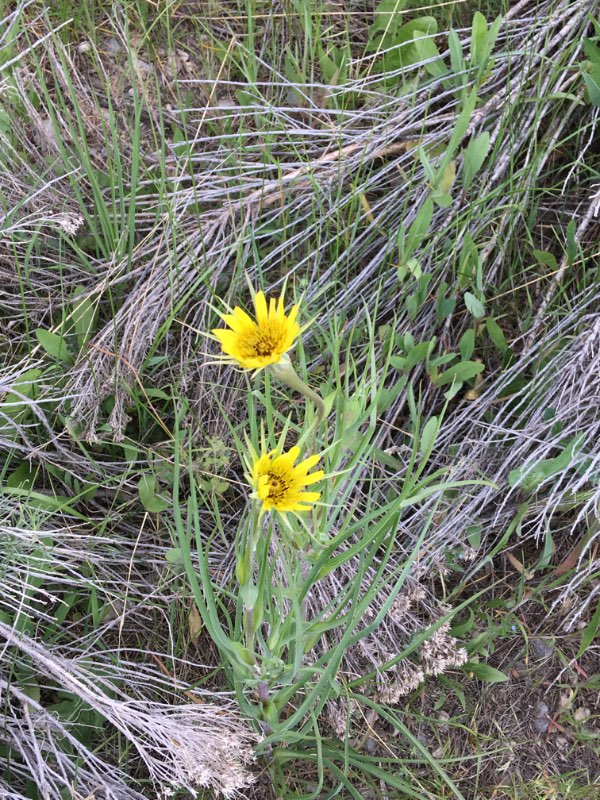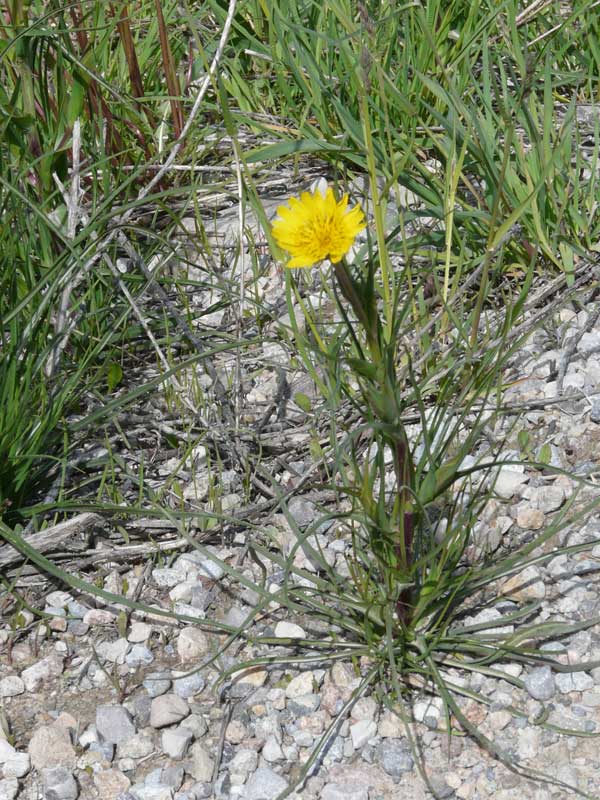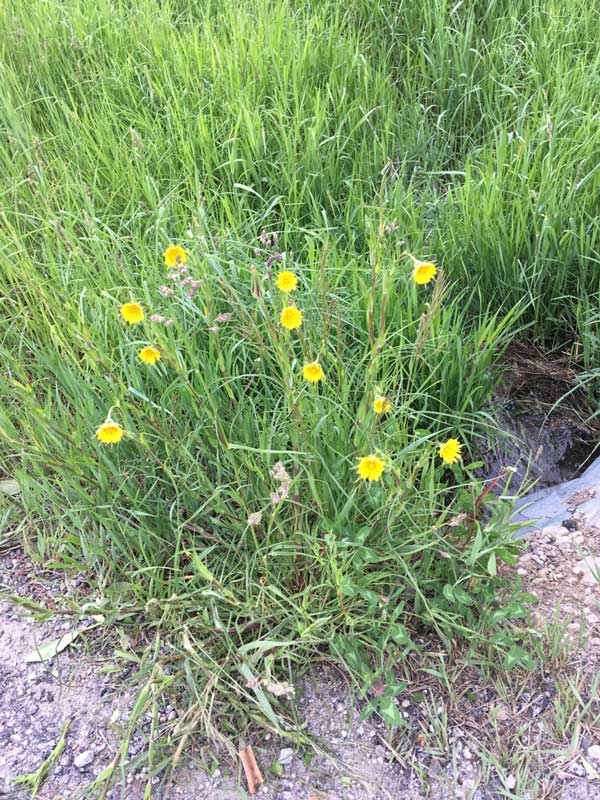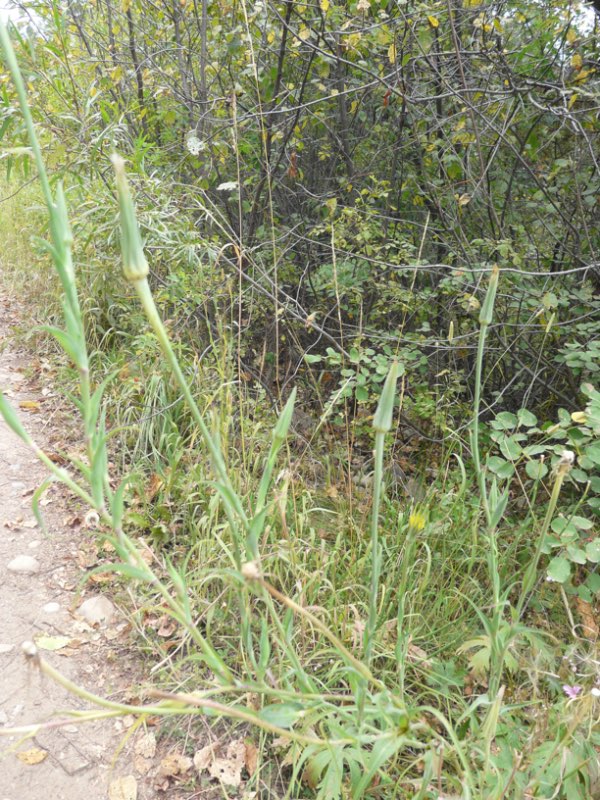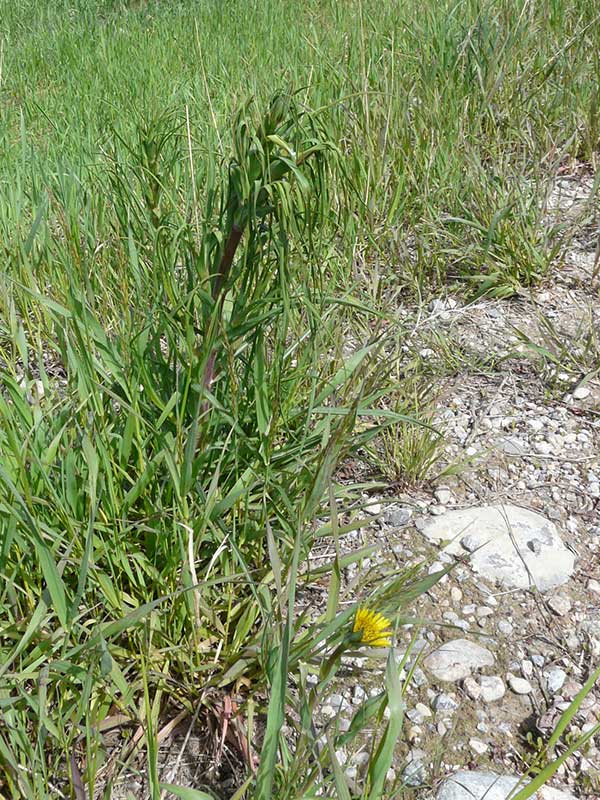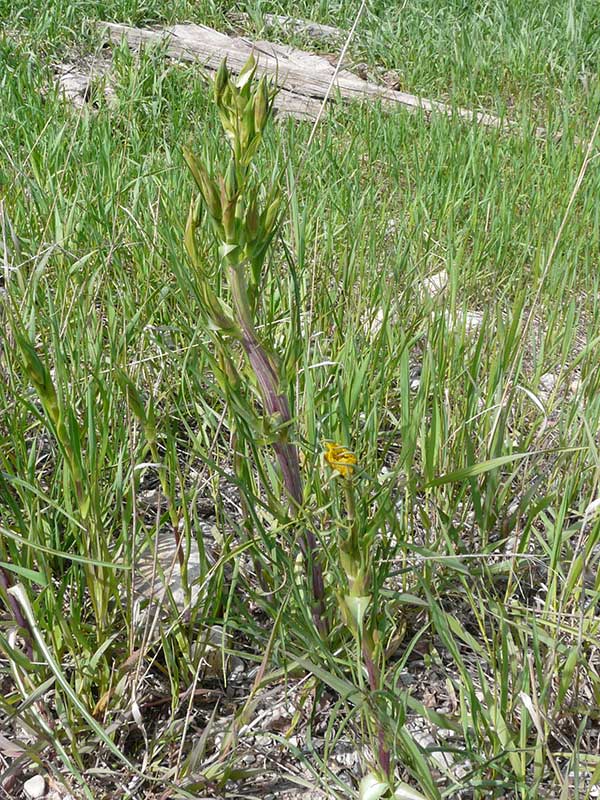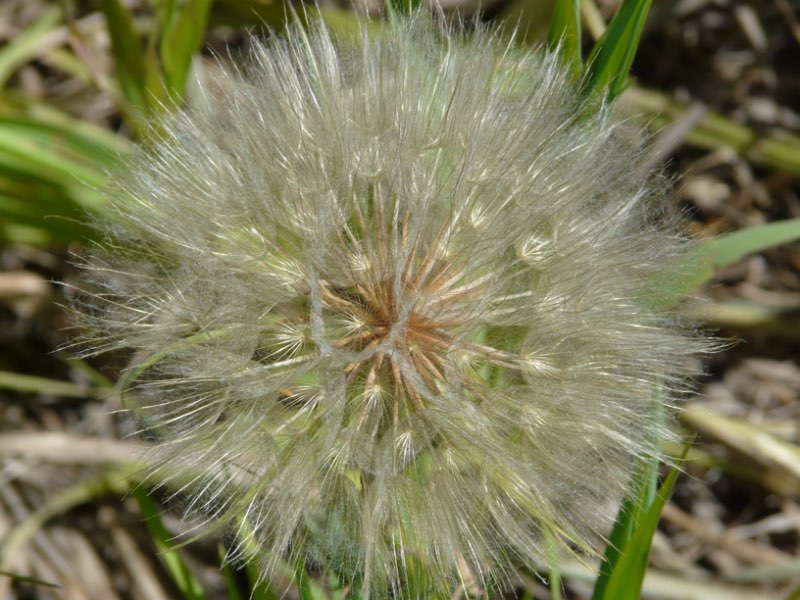Tragopogon spp. / salsify
- large yellow inflorescence with pointy sepals extending past the “flower”
- grass-like leaves
- non-native, weed
- widespread
Also known as: goat’s beard, wild oysterplant, yellow salsify, yellow goat’s beard, meadow goat’s beard, goatsbeard
There are at least two species of Tragopogon in The Valley. The “type specimen” here is T. dubius. Oddly, three species were introduced to North America from the Old World as food and garden plants – sometime in the early 1900s, apparently; the roots were purported to be edible. Earle and Lundin, however, reported that the roots of T. dubius are stringy and “hardly seem edible”. It isn’t like there weren’t plenty of plants on the continent that are edible, even with edible roots, but I guess to know that you might have to ask someone. Or maybe they simply mistook it for T. porrifolius which is edible enough to make it into school cafeterias in some countries. Another species, T. pratensis, was also introduced and we have that here as well. The obvious difference between that and T. dubius is that in pratensis, the sepals don’t extend past the petals. The two species have produced at least 2 fertile hybrids in Idaho. Both species are represented in the gallery.
In any case, salsify is a weed throughout the Valley. It seems to fill the open spaces where farming or ranching has given way to subdivisions, as well as roadsides, construction sites, etc. It even occurs on mountainsides, although, fortunately not in abundance. It is a more-than-prolific seed producer.
But like a number of other weeds (e.g. stickseed or wild lettuce), it seems to be saying – “OK, if no one else wants to live here, I will.” In the long term, the very long term, it will probably go away as either other perennials get established and compete it away, or the soil nutrient resources get depleted. Both are very long term processes.
For now, then, we might as well delight in its bright yellow flowers, the interesting spikes (sepals, actually) that extend beyond the petals, its crazy big, pointy buds and the extremely big, puffy seed heads… like giant dandelion puff balls. But you also have to look pretty quickly… the flowers display for just one morning and are gone by about noon, perhaps earlier (one of the common names for T. pratensis is Jack-go-to-bed-at-noon). A field of salsify might look pretty when it is all yellow, but that doesn’t last long enough to really justify its existence.
| Family | |
|---|---|
| Color | |
| Blossom size | |
| Inflorescence size | |
| When? | |
| Where? |
